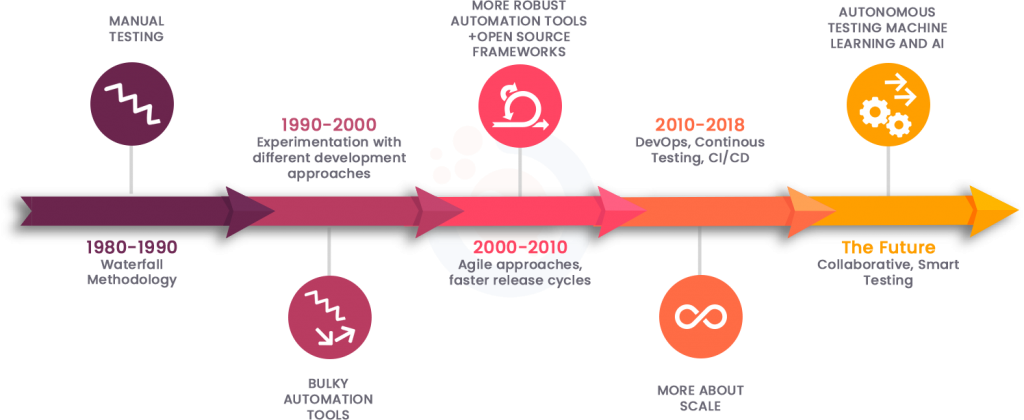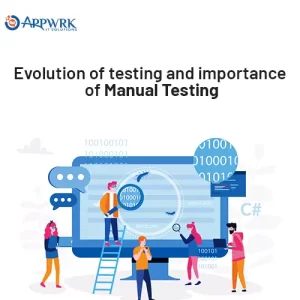Evolution of testing and importance of Manual Testing in modern times.
Software testing has always been playing a significant part in the software development process. However, the idea of testing of software has been evolving science it’s beginning.
The concept of software testing was structured by Dave Gelperin and William C. Hetzel in 1988.
Table of contents
THE EVOLUTION OF TESTING

1) Manual Testing(1980-1990)
In the era of 1980s Manual Testing was conducted through the Waterfall Methodology, which is a subsequent design process in which progress is seen as flowing steadily downwards (like a waterfall).
2) Bulky Automation Tools(1990-2000)
At the beginning of the 1990s testing was conducted using bulky automation tools, doing experimentation with different development approaches.
Open Source Frameworks and robust automation tools(2000-2010)
With the approach of 2000, a more robust approach towards automation tools with open-source frameworks and agile approaches was in action which helps in a faster defect-free release.
3) Scaling Automation and DevOps(2010-2018)
In the current scenario, one of the best practices followed by the CDevOps teams is continuous testing. Continuous integration and continuous delivery making this an ongoing process for testing and analyzing the progress even faster.
4) The Future of Testing
Autonomous testing, Machine Learning, and Artificial Intelligence collaboratively will be shaping the path for software testing in the future. Collectively they will be making the process of testing more smartly and in a secure way.
Why is manual testing still important?
▪️ Testing is done from a Human point of view
▪️ Manual Testing increase area of observation and alteration
▪️ Manual Testing provides a more accurate result
▪️ Few scenarios are not technically practical for Automated Testing
▪️ Better Understand of the problem with Manual Testing
1) Testing is done from a Human point of view
Human testers can rapidly identify when something is not right. Automated test scripts are not designed to catch these visual issues. When a tester associates with software as a user would, they’re able to discover usability issues and user interface glitches. Automated test scripts can’t test for such things.
2) Manual Testing increase area of observation and alteration
Automated tests only perform the actions that you program them to. They require planning and devising to write, which restricts the test to certain boundaries. These limits mean there isn’t any room to wander from the written test to truly “explore” the application. Exploratory testing allows cutting in our path throughout the test with little to no boundaries.
3) Manual Testing provides a more accurate result
Just like code can have bugs at times, similarly, automated test scripts may have bugs. This means that automated testing can report false positives and false negatives. By including a human touch throughout the testing process, these errors can be avoided, and the outcome of the progress can be improved.
4) Few scenarios are not technically practical for Automated Testing
Let’s take a small example of an iPad app that relies heavily on tap gestures. Automating the “tap” can not only be costly but also might be not accurate in comparison to a human’s finger touching the user interface. It often makes more sense to test certain features manually. A manual test could be completed with bugs already fixed in much lesser time as compared to automated testing. At times it is better to take the “manual” route.
5) Better Understand of the problem with Manual Testing
Automated testing can save time. It is great for getting quick results on a broad level, but manual testing allows and helps us to understand the problem on a conceptual and emotional level. It connects us with the end-user and brings in a sense of empathy which automated testing doesn’t provide.
Even after a speedy evolution of testing and the bright future aspects of Autonomous Testing, the manual testing cannot be completely ignored because the applications cannot be fully automated (change requests) and the possibility of an error during machine computing might pertain. Moreover, testings that are carried out using Automation are limited to a defined radius of Automation scope. Hence, manual testing still holds an important place in the current testing era.
About The Author


 Free Quote
Free Quote
















































